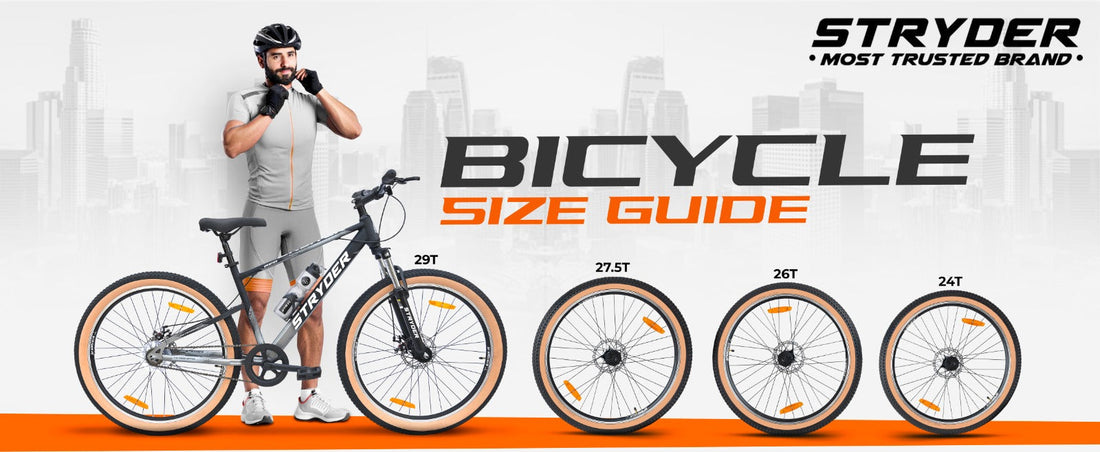What is the first thing that strikes your mind when you hear ‘bicycle’? Might it be the frame, the gears, or even the pedals? But how many times do we stop to admire the bicycle wheel? These are the true champions of your bike, as they form the core and help with a steady ride during your commute, mountain biking, or cycling down a hill. Let’s set this right today.
In this guide, we’re diving into everything you need to know about bicycle wheels—their key features, types, and how to maintain them. If you are an office goer, a biking fanatic, or are preparing for your next great cycling trip, then this post is great for you.
Why Bicycle Wheels Are More Important Than You Think
Think about it—your bicycle wheel is your constant companion, absorbing shocks, providing balance, and ensuring every turn is effortless. But the correct set of wheels changes everything for your bike. From navigating city streets with road wheels to conquering rugged trails with mountain bike wheels, the right wheels make all the difference.
Key Features of Bicycle Wheels
Let’s break down the critical components of a bicycle wheel and why they matter:
1. Rims
A rim fully contains the tyre, and it, of course, is key in determining performance, even for the bike. Lightweight rims are ideal for road wheels, offering speed and efficiency, while reinforced rims are crucial for off-road cycles like mountain and fat tyre bikes.
2. Spokes
Spokes connect the rim to the hub, maintaining the wheel's structure. More spokes often mean greater strength, so MTB cycles or fat tyre wheels feature thicker or additional spokes to withstand challenging terrains.
3. Hubs
The hub is the central part of the wheel where all the action happens. In e-cycles, you may find motors integrated into the hubs, especially for rear-wheel-driven bikes. For traditional cycles, a smooth hub ensures seamless rotation.
4. Tyres
From slick tyres for city streets to knobby ones for trails, tyres define the purpose of the wheel. Wider tyres, like those on fat tyre wheels, provide better traction and stability on snow, sand, or rocky surfaces.
Types of Bicycle Wheels
Different terrains and riding styles demand different types of wheels. Let’s explore:
1) Road Wheels
Perfect for city dwellers and long-distance riders, road wheels are designed for speed and smoothness. Their thin rims and sleek tyres reduce rolling resistance, making them ideal for paved surfaces.
-
Best for: Daily commutes, business rides, and long distances.
-
Maintenance tip: Always keep the tyre pressure in check for optimum performance.
2) Mountain Bike Wheels
If adventure is your calling, mountain bike wheels are your best ally. Having the capacity to withstand forceful terrain, these wheels are rigid and stable.
-
Best for: Trail rides, climbing steep slopes, and navigating rocky paths.
-
Maintenance tip: Regularly inspect the spokes and tighten any loose ones to prevent wheel wobble.
3) Fat Tyre Wheels
The all-rounders of the cycling world, fat tyre wheels excel on snow, sand, and extreme terrains. Their broader surface area enhances traction and absorbs shocks for a stable ride.
-
Best for: Beach rides, snowy landscapes, and off-road explorations.
-
Maintenance tip: Check for punctures frequently, as the wider surface increases exposure to sharp objects.
How to Maintain Your Bicycle Wheels
Maintaining the wheels, however, does not take a rocket scientist. All it takes is a bit of attention to make sure the ride is as smooth as desired while increasing the longevity of the wheels.
1. Check Tyre Pressure Regularly
Low pressure can slow you down, while overinflated tyres make for a bumpy ride. Use a pump with a pressure gauge to maintain the recommended tyre pressure.
2. Inspect for Damage
Tyres endure damage from cutting, puncturing, and worn tread during the rough riding. The rims also need an inspection due to the constant wear and damage, and it is imperative to scrutinize spoke tension.
3. Clean and Lubricate Hubs
Dust and grime can affect your wheel hubs, especially if you ride off-road cycles frequently. A clean hub ensures smooth rotation and a better ride experience.
4. Replace When Necessary
Apart from wheel maintenance, they eventually wear and tear like any other object. To solve this, keeping an eye out for uneven tread wear and other such signs can indicate when to substitute them.
Why Choose Stryder Bikes for Quality Bicycle Wheels?
At Stryder Bikes, we understand that the bicycle wheel is the cornerstone of a great ride. That’s why we design our wheels to be robust, reliable, and ready for any challenge.
-
24T Magnet MTB: Perfect for youth, this bike features a suspension fork and wide tyres for unmatched versatility.
-
27.5T Krueger 21 Speed MTB: Designed for the adventurous, it has Shimano components and alloy rims for durability.
-
Stryder Range: With over a decade of expertise and millions of satisfied riders across 30 countries, Stryder offers unmatched quality in its bikes and components.
Final Thoughts
Your bicycle wheels are more than just circles that roll—your ticket to freedom, adventure, and fitness. So, implement the knowledge of maintaining them to ensure clean, uninterrupted bike rides.
So, whether you’re exploring trails with your MTB cycle, conquering sandy beaches on fat tyre wheels, or zipping through the city on road wheels, remember to give your wheels the attention they deserve. Stryder Bikes is one of the most trusted bike manufacturers, and it sincerely guarantees that every ride will be as lively as the first one. It's time to put on every piece of gear, check your wheels, and ride!

